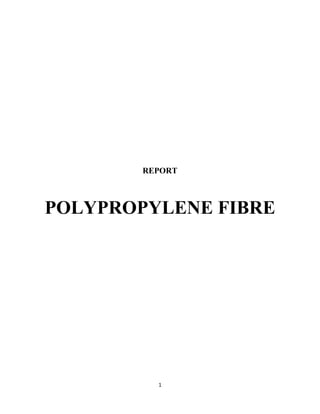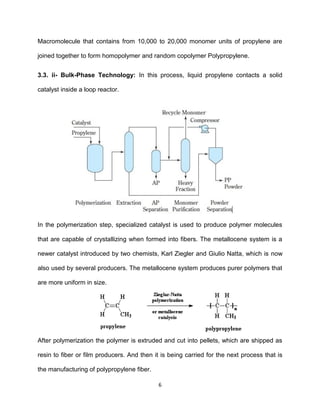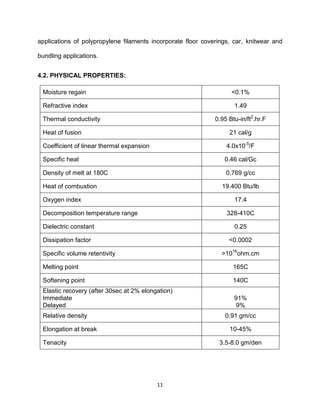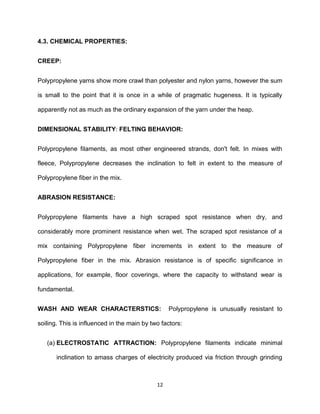Polypropylene fibre is produced from the polymerization of propylene gas. It has a non-polar structure which makes it difficult to dye. There are several methods to manufacture polypropylene fibres, including melt spinning and film slitting processes. Polypropylene fibre is lightweight, chemically resistant, retains its properties in wet and dry conditions, and resists mildew, insects and fading. However, it cannot be dyed and has low thermal conductivity. Applications include carpets, fabrics and conveyor belts due to its strength and durability.





















